Ravioli (a single one is called a raviolo) are a traditional type of Italian filled pasta. Our tours to Emilia Romagna bring us to the heart of Italy’s stuffed pastas, where we find tortellini, tortelloni, tortelli, cappellacci, and many others. Ravioli are square shaped, made up of some sort of filling sealed between two layers of thin egg pasta dough and are served either in broth or with a sauce. The word may be derived from the Italian dialectal rava or rabiola, little turnip, or from the verb ravolgere (to wrap). The latter makes more sense to me!
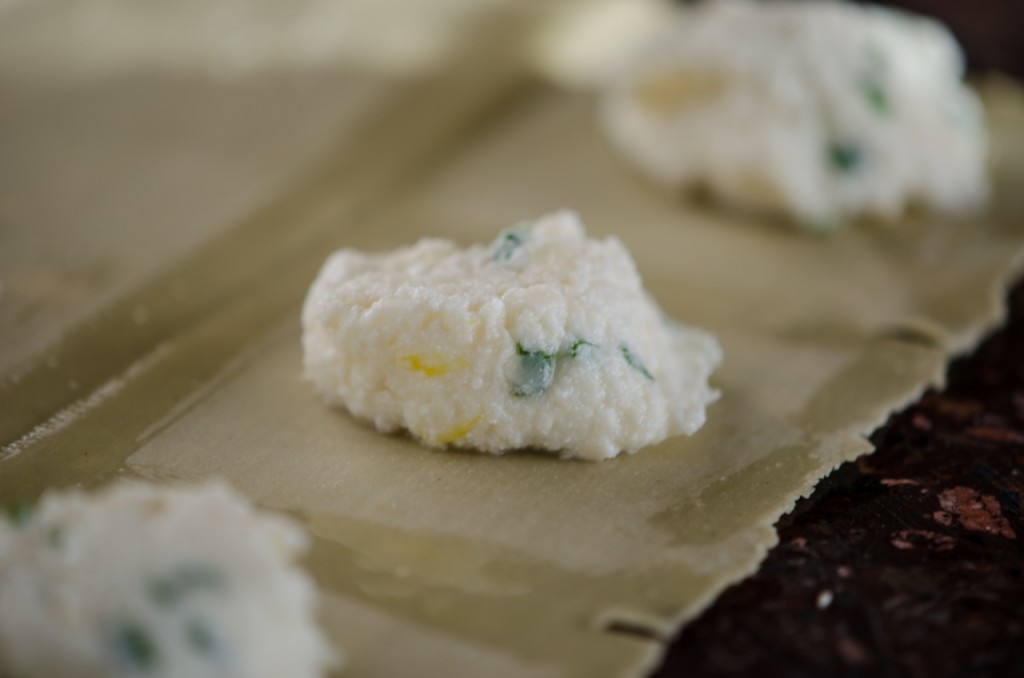
Common lore has held that pasta arrived in Italy via the Asian explorations of Marco Polo in the sixteenth century, but this is not the case. The first evidence of pasta in Italy, a dried pasta made from durum wheat, occurs much early, as far back as 800 AD. The first mention specifically of a stuffed pasta called ravioli appears in the writings of Francesco di Marco, a Venetian merchant in the 14th century. In Venice, the mid-14th century publication Libro per Cuoco describes a ravioli of blanched and minced green herbs which are combined with fresh cheese and egg, and simmered in broth. Around the same period, you can find mentions of ravioli in Tuscany and Rome, and Sicily.
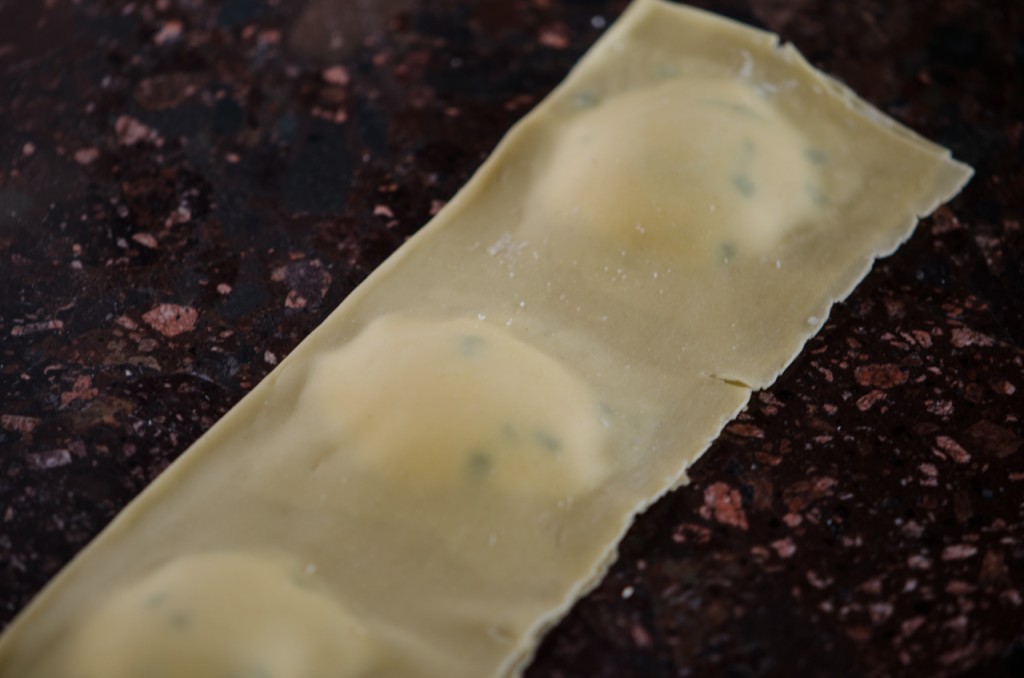
Much more likely is that pasta arrived in Italy from the south. In Africa, there is evidence of ancient forms of pasta made from their local grain, kamut. In Asia, rice flour would be used. In Greece, pasta appeared in the traditional cuisine in the forms of orzo (not to be confused with orzo in Italy, which is barley) and pastitchio. Stuffed pastas are the speciality of Northern Italy, particularly today in the region of Emilia Romagna. According to Lynn Rosetto Casper in her wonderful comprehensive book “A Splendid Table”, the softer wheat that flourishes in the fertile Po River valley is particularly well-suited to the more delicate stuffed pastas. The harder wheats cultivated in the south are better for dried.
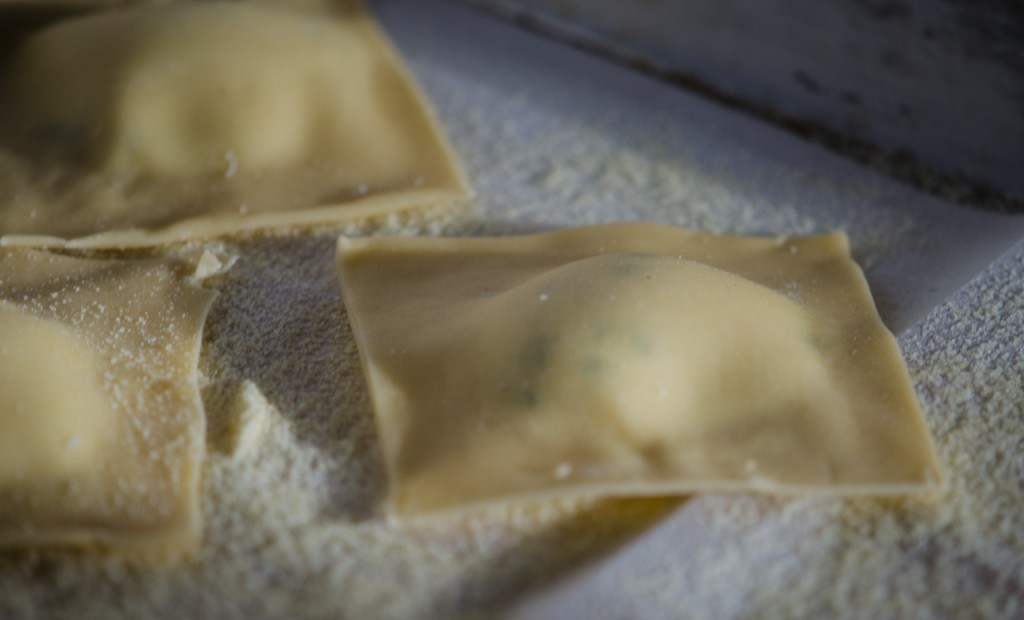
I was recently asked to develop a ravioli recipe for a video how-to segment on eHow.com, a Chive and Cheese Ravioli with a Tomato Red Pepper Sauce. This style of cheese filling is one of the oldest on record, and found all over Italy, popular during Lent and other religious days of abstinence. You could certainly substitute basil, or even some sauteed spinach for the chopped chives. Serving this in a tomato sauce would not have happened until the 16th century, when tomatoes first arrived in Italy from the New World. The sauteed red peppers add a satisfying sweetness to the sauce.
Chive and Cheese Ravioli with Tomato Red Pepper Sauce
Pasta Dough (based on Lynne Rosetto Kasper’s recipe in A Splendid Table)
2 cups (200g) all-purpose unbleached flour
4 eggs
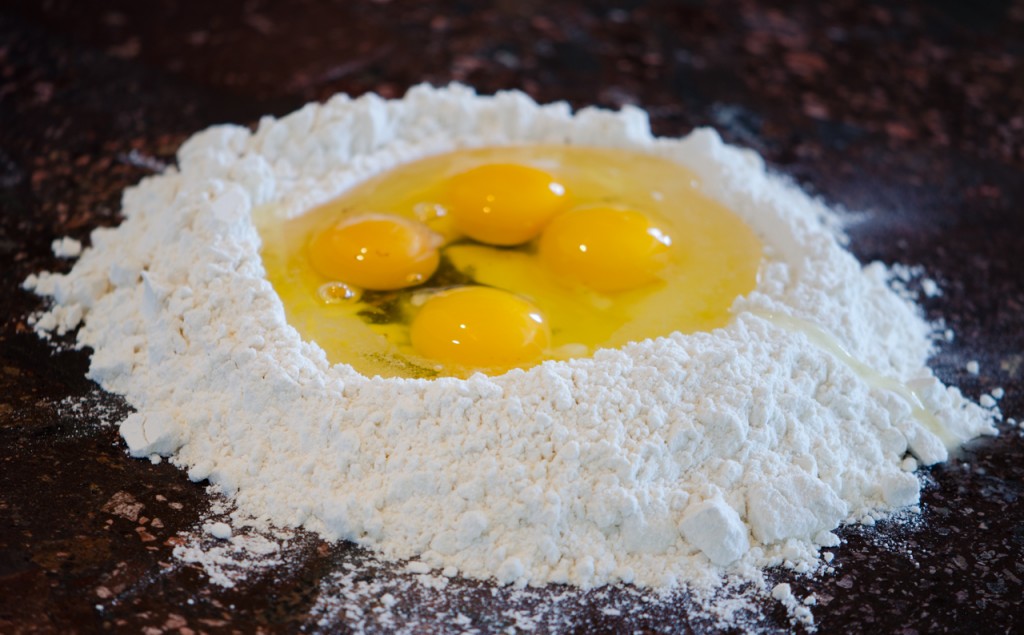
Place the flour on your counter in a mound. Make a well in the middle. Add the eggs. Using a fork, lightly beat the eggs. Gradually start incorporating the flour from the sides of the well. Eventually the sides of the well will collapse, at this point use a pastry scraper to work the rest of the flour into the dough.
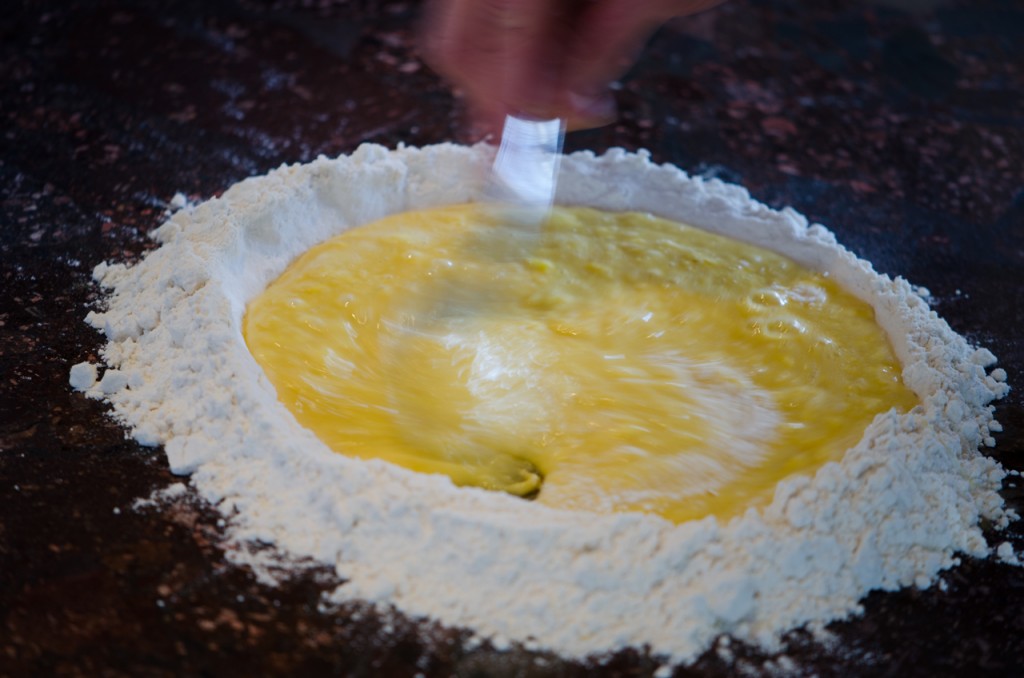
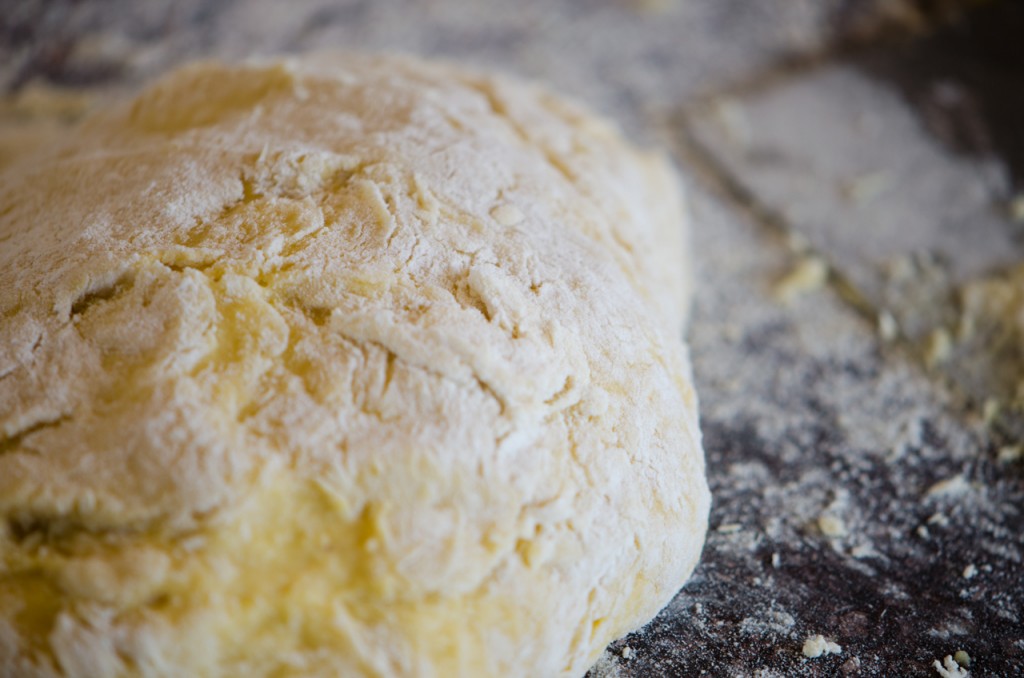
Knead the dough for about 15 minutes, working a bit more flour into it when it gets a bit sticky. The dough should be very smooth, silky, and very elastic.
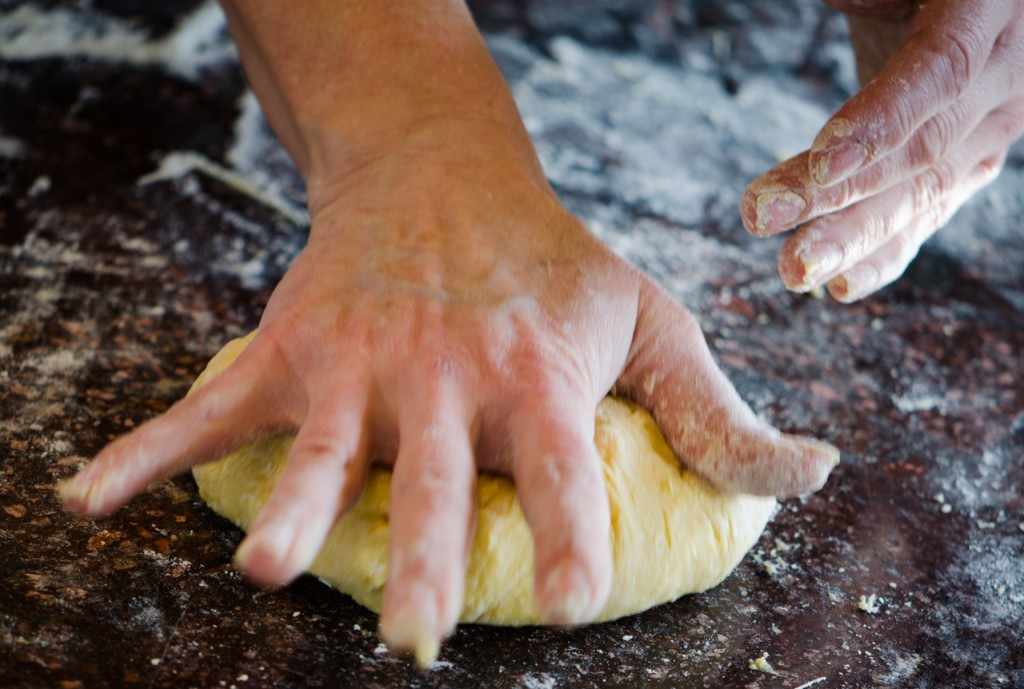
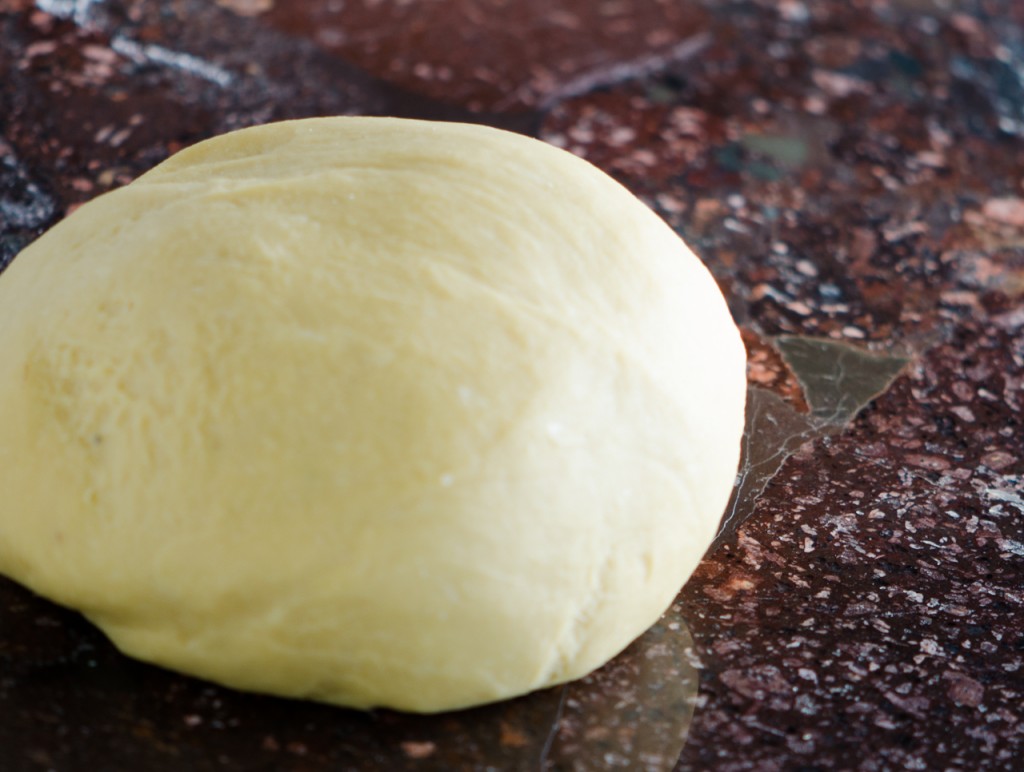
To roll out the pasta using a pasta machine, divide the dough into quarters. You will roll out one quarter at a time, while rolling keep the remainder covered with plastic wrap so it does not dry out. Lightly flour the machine rollers, the work surface around the machine, and the first quarter of dough. Set the rollers at the widest setting. Flatten the dough into a disc, sprinkle with flour, then feed the disc into the space between the two rollers. Feed the dough through with one hand, while holding the upturned palm of your hand under the sheet emerging from the rollers. Keep your palm flat to protect the dough from punctures by your fingers.
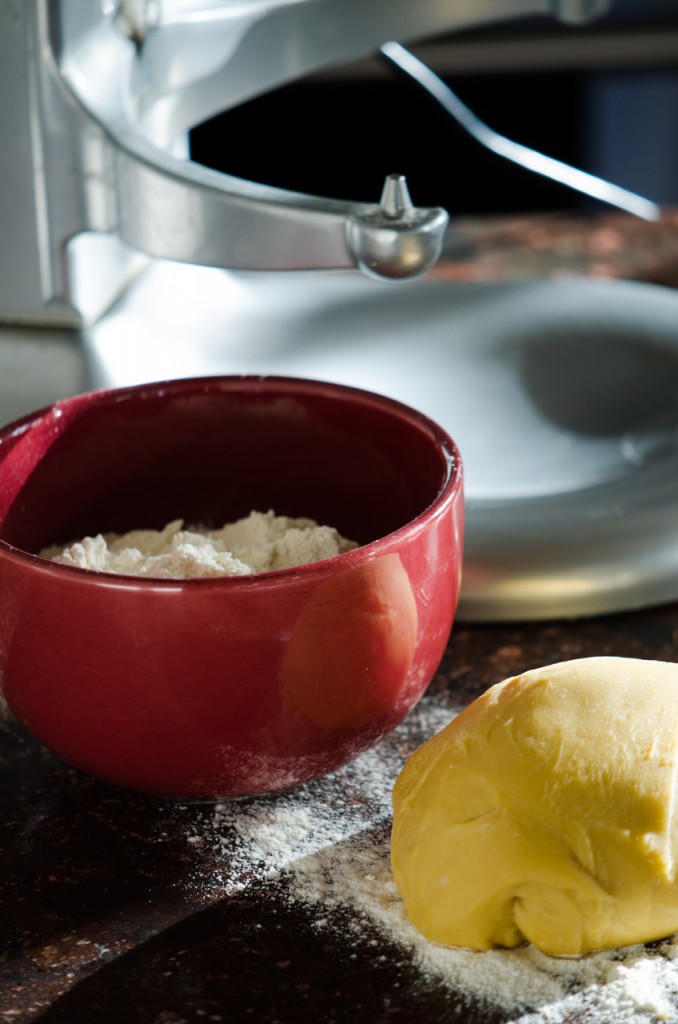
As the sheet emerges from the rollers, guide it away from the machine with your palm. Pass the dough through the rollers five to six times, folding it into thirds and flouring it each time. Then set the rollers at the next narrower setting and pass the dough through three times, folding it in half each time. Repeat, passing it through three times at each successively narrower setting. Repeated stretching and thinning builds up elasticity making especially light pasta. If the sheet becomes too long to handle comfortably, cut it in half or thirds and work the pieces in tandem.
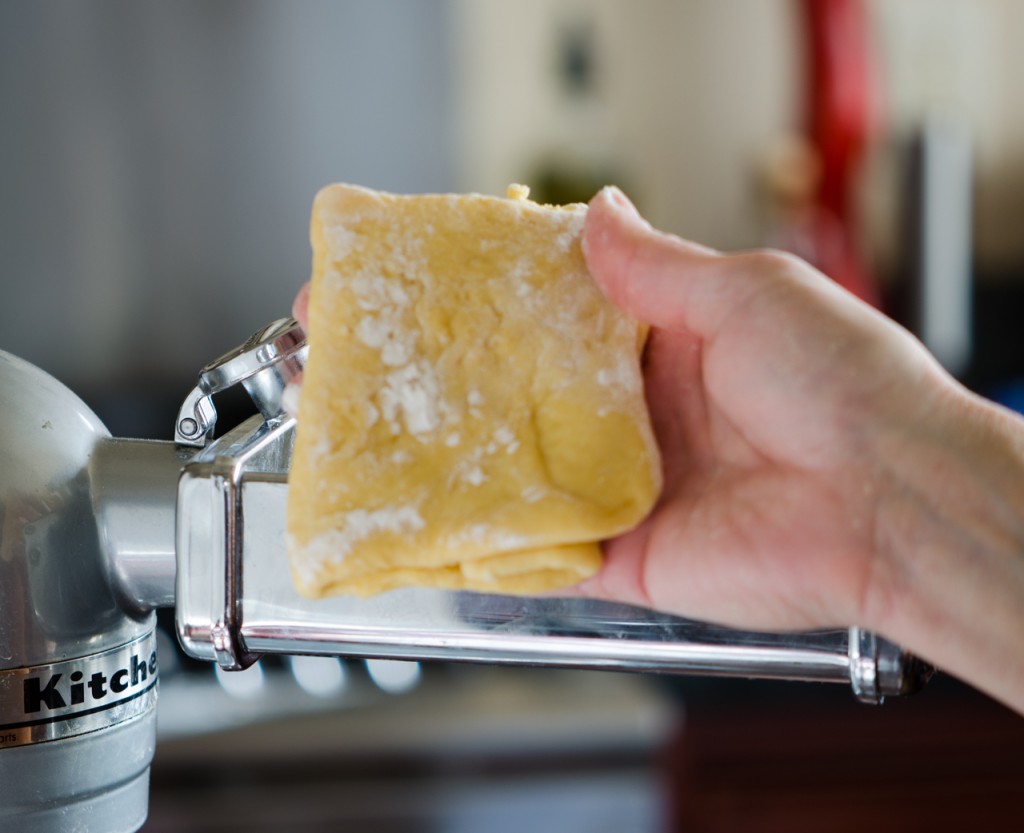
Don’t worry if at first the dough tears, has holes, is lumpy, or is very moist. Just lightly flour it by pulling the dough over the floured work surface. Take care not to overdo the flouring, or the dough may get too stiff. As you keep putting it through the rollers, it will be transformed from slightly lumpy and possibly torn to a smooth, satiny sheet with fine elasticity.
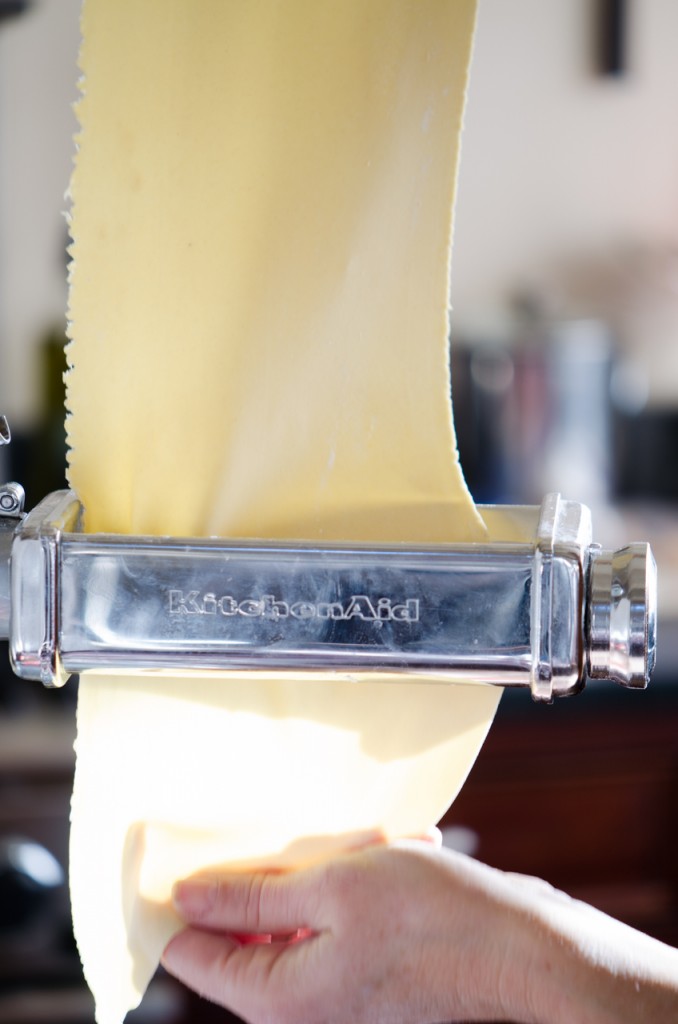
Different machines have different numbers of settings. Tagliatelle and ribbon pastas should be a bit thick than lasagne and stuffed pastas such as ravioli. Usually the thinnest setting on a machine will be thin enough for you to see color and shape through it; this is perfect for lasagne and filled pastas. If it is so thin that the dough tears easily, however, stop at the next to last setting. The setting above the one for filled pastas is fine for tagliatelle and tagliarini.
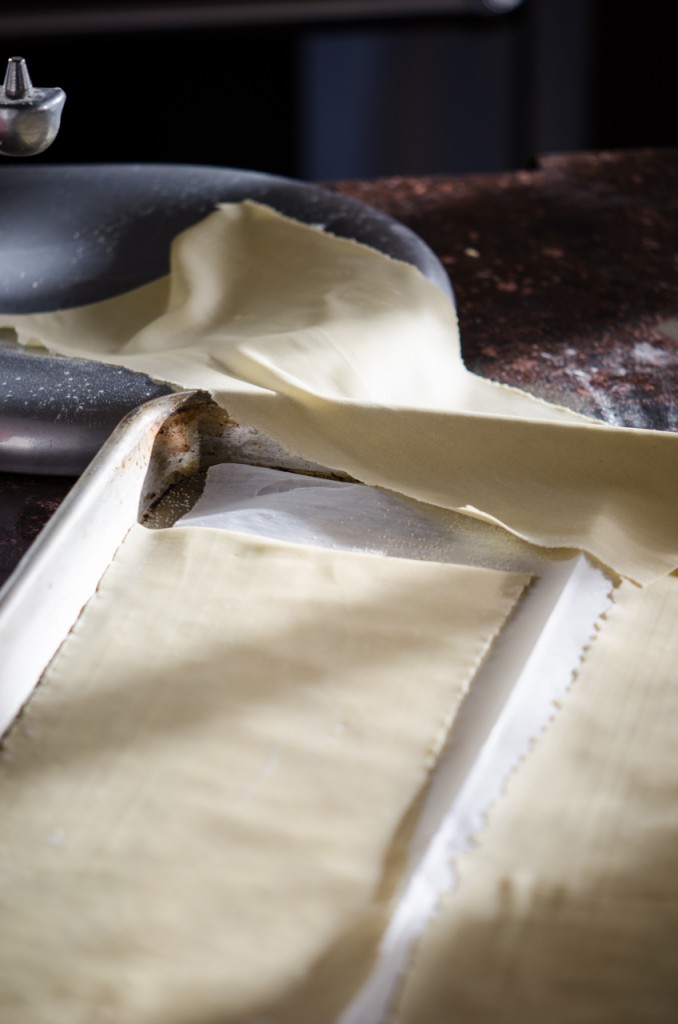
Place the pasta sheets on a floured sheet pan, separated by deli paper or plastic wrap. Cover the pile with a slightly damp towel.
Chive and Cheese Ravioli
1 cup ricotta cheese
1 1/2 cups grated Parmigiano-Reggiano cheese
1 egg, beaten
1 teaspoon lemon zest
2 tablespoons finely chopped chives
Kosher salt and freshly ground pepper
In a medium bowl, mix together the cheeses, egg, lemon zest and chives. Season with salt and pepper. Refrigerate for 2 hours before forming ravioli.
To form ravioli:
1 egg, beaten
Place one pasta sheet horizontally on your work surface, keeping the rest covered so they don’t dry out. Cut any rounded edges off of the two shorter sides, so you have a long rectangle in front of you. Using a knife, make a small mark every 2 1/2 inches along the length of your sheet. Between each set of these marks, place 1 tablespoon of ravioli filling about 1 inch in from the long edge in front of you, and equally spaced between the mark. You should have a line of little spoonfuls of filling, spaced 2 1/2 inches apart.
With a small brush, moisten each of the 4 edges of the pasta sheet with the beaten egg. Paint egg widthwise between each spoonful of filling. Paint a long line of egg wash lengthwise, right down the middle of the pasta sheet.
Fold the pasta sheet in half, lengthwise, matching the long edges and covering up the spoonfuls of filling. Press down around each spoonful of filling, sealing the pasta sheets around each ravioli and pushing out any air pockets. Using a knife or a pasta cutting wheel, cut the individual raviolis between each spoonful of filling, which should be where you made the initial mark. Place the ravioli on a floured sheet pan. Repeat with the remaining sheets.
Tomato Red Pepper Sauce
To serve (for 4 people)
2 tablespoons extra virgin olive oil
1 red pepper, seeded and diced small
2 cups tomato sauce
1/2 cup grated grana or parmegiano reggiano cheese
Place the olive oil in a medium saucepan, and add the red pepper. Saute until soft, about 5 minutes. Add the tomato sauce, and bring to a simmer over medium heat. Cook for another 5 minutes. Adjust seasonings and keep warm.
Fill a large stock pot with water, and bring to a boil. Season with salt. Drop in the ravioli and cook for just a couple of minutes. Check one for doneness by tasting. They should be tender, but still have some ‘bite’, al dente. When done, pour into a warmed serving bowl, and top with the tomato red pepper sauce. Serve with additional grated cheese.
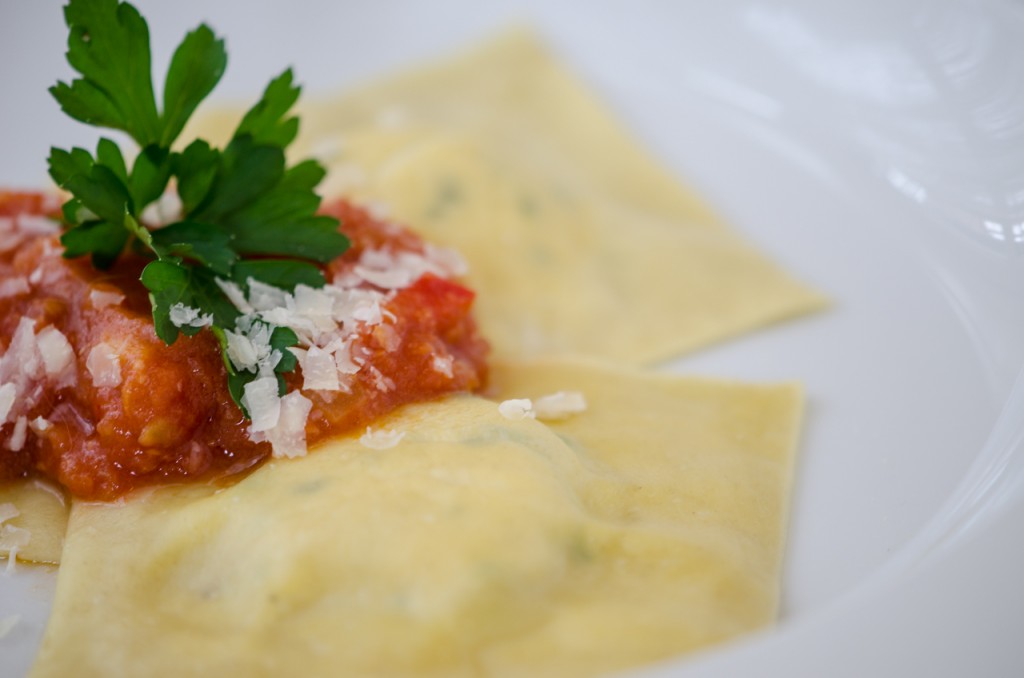
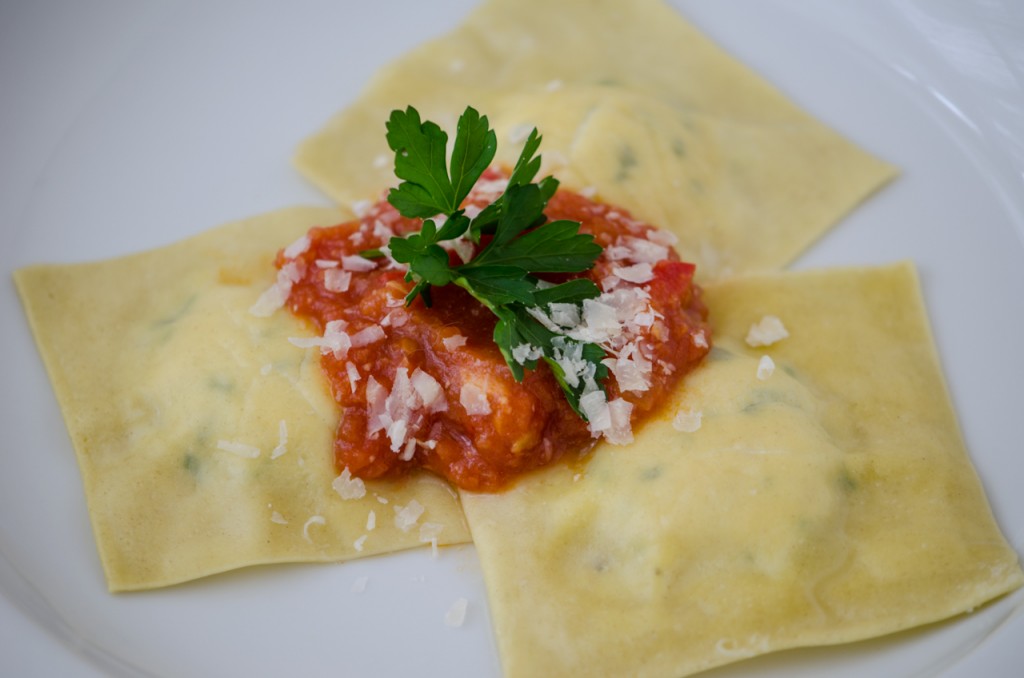

One Response to Cheese and Chive Ravioli with Red Pepper Tomato Sauce